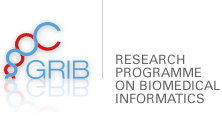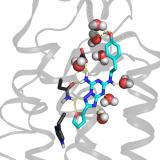
18/11/2016
Thesis defence of José Carlos Gómez Tamayo: "Development and application of computational techniques to drug discovery and structure-function relationships"
Next Friday, 25th of November at 11:30, José Carlos Gómez Tamayo, member of the PharmacoInformatics group of GRIB will defense his thesis "Development and application of computational techniques to drug discovery and structure-function relationships" at PRBB Auditorium.
Abstract
This thesis presents the results of various computational techniques applied to the complex world of drug discovery/design, with a particular focus to its application to one of the most important membrane protein family, the GPCRs. Developed projects include:
- LigandFinder
This web application provides a user-friendly way to perform fast virtual screening to find new compounds similar to a set of compounds of known structure. It explores the chemical space of a database with more than 20M compounds. To our knowledge, LigandFinder is the first virtual screening web application able to use several ligands as input.
- Sulfur-containing amino acids study
In this work the interactions of sulfur-containing amino acids (cysteine and methionine) in membrane proteins are studied. A refined crystal structures database is screened in order to find interactions of sulfur-containing residues with themselves and other residues. These interactions are clustered, and the interaction energy of representative structures is calculated through high-level quantum chemical calculations.
- GPCR-SAS
This web application takes advantage of the structural similarity among GPCRs' transmembrane regions to perform statistical analysis of sequence positions or motifs within the transmembrane helices of GPCR A, B, C, and F classes. GPCRSAS provides different types of analysis such as position/positions/range of positions conservation, entropy, co-evolutionary (co-variance) and correlation analysis. Additionally, there is the possibility of drawing a snakeplot representation with conservation information.
- The extracellular entrance provides selectivity to 5-HT7 receptor antagonists with antidepressant-like behavior in vivo
This work highlights the importance of the low conserved extracellular part of the serotonin receptors in ligand selectivity. The binding mode of a selective 5HT7 receptor antagonist with antidepressant activity is described, opening the way for a new generation of antidepressant drugs.



